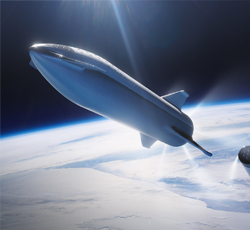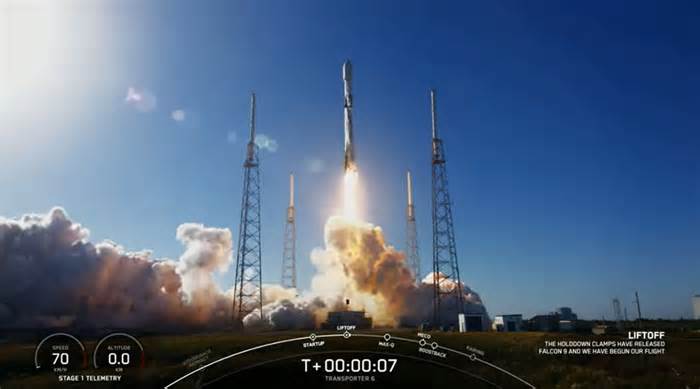
SpaceX launches Falcon 9 rocket on record 11th flight carrying 52 ...
- by Space.com
- Dec 18, 2021
- 0 Comments
- 0 Likes Flag 0 Of 5

Breaking space news, the latest updates on rocket launches, skywatching events and more!
Contact me with news and offers from other Future brands
Receive email from us on behalf of our trusted partners or sponsors
By submitting your information you agree to the Terms & Conditions and Privacy Policy and are aged 16 or over.
The first of those missions will launch a communications satellite called Turksat 5B less than 19 hours after the Starlink mission sailed into orbit — a new company record. Liftoff is set for 10:58 p.m. EST (0358 GMT Sunday) from a pad at the Cape Canaveral Space Force Station.
On Tuesday (Dec. 21), SpaceX is scheduled to launch another Falcon 9 rocket carrying a Dragon cargo ship to the International Space Station for NASA from the agency's Launch Pad 39A at the Kennedy Space Center in Florida.
More Starlink satellites in orbit
Saturday's flight continues SpaceX's efforts to expand and upgrade its burgeoning Starlink internet constellation. This is the fourth flight to carry its newly upgraded Starlink internet satellites, as the company recently equipped each of the flat-paneled satellites with the ability to communicate with each other via laser links. This will increase efficiency and reduce the constellation's reliance on ground stations down here on Earth, company officials have said.
This launch brings the total number of Starlink satellites launched up to 1,944 since May 2019. It also has an unusual orbit, which will hug the coast of California as the satellites are eventually expected to reach a parking spot that's a bit more centralized. (Typically, launches from California target a more polar trajectory.)
This view from a SpaceX Falcon 9 upper stage shows the stack of 52 Starlink satellites launched into orbit on Dec. 18, 2021 as dawn breaks.
(Image credit: SpaceX)
SpaceX has five orbital shells designed to be filled with roughly 4,400 Starlink internet satellites. These shells will be located at various altitudes above the planet, between 335 and 348 miles (540 and 560 kilometers) and at inclinations of 53, 53.2, 70, and 97.6 degrees. (The inclination is the angle between the orbital plane and the equator.)
To date, the 53-degree shell has been filled and SpaceX is turning its sights to other inclinations. Of the recent Starlink missions to launch, two payloads have been deposited into the 53.2-degree inclination and one into the 70-degree slot. That launch blasted off from California in Sept.
Saturday's mission will fill another spot in the 53.2-degree orbit, marking a switch to a non-polar orbit for a California payload.
SpaceX aims to use its Starlink megaconstellation to connect people around the globe to the internet, particularly those in rural and remote areas who have little-to-no connectivity. Company officials have said that the program now serves more than 100,000 subscribers in 20 countries and is still growing.
Please first to comment
Related Post
Stay Connected
Tweets by elonmuskTo get the latest tweets please make sure you are logged in on X on this browser.






 Energy
Energy


















